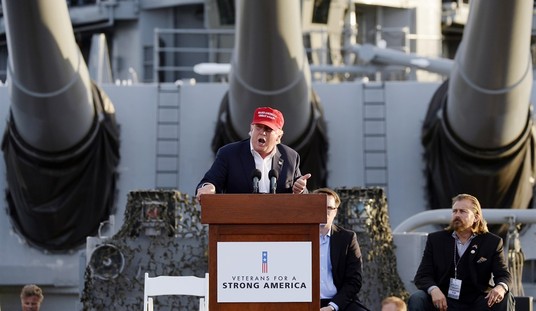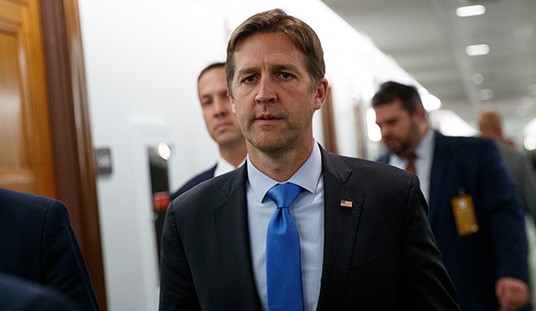WASHINGTON — Defense officials say that improvements over the past year intended to prevent another Benghazi have included weekly threat-discussion chats and a decision to put the protection of human lives on the same level as the protection of intelligence at diplomatic facilities.
While the Hill was largely transfixed on the House Oversight and Government Reform Committee’s latest examination of the Benghazi attack Thursday, an Armed Services Subcommittee hearing convened before a nearly empty gallery to hear about the Defense Department’s posture a year after the Benghazi attack.
“We are taking prudent steps to reduce the vulnerability of people and facilities abroad while not turning our embassies into fortresses and degrading our diplomats’ ability to do the critical work that benefits us all,” Gary Reid, the principal deputy assistant secretary of Defense for Special Operations and Low- Intensity Conflict, told the panel.
Rep. Martha Roby (R-Ala.), chairwoman of the Oversight and Investigations Subcommittee, noted at the open hearing that “in order to understand fully the Department of Defense’s response, it has been necessary for the subcommittee’s briefings to be held at top secret or higher level.”
“Based upon the information we have collected to date, I don’t believe that any amount of heroism during the attacks could overcome the tragic lack of preparedness leading up to it,” Roby said.
“It does not appear that U.S. military forces units, aircrafts, drones or specific personnel that could have been readily been deployed in the course of the attack in Benghazi were unduly held back or told to stand down or refused permission to enter the fight. Rather, we were so badly postured, they could not have made a difference.”
Reid told the committee that the national security staff “convenes weekly reviews of threat streams and security measures to identify hot spots, anticipate crises and synchronize our proactive, preventative and contingency response planning efforts.”
“Our colleagues in the intelligence community provide daily reporting of threat indicators and warnings, and our combatant commanders and chiefs of mission are in regular contact to assess threats and discuss contingency plans,” he said.
Improvements over the past year include the addition of a deputy assistant secretary for security at high-threat posts at the DoD. Congress also approved the addition of up to 1,000 Marines into a diplomatic security detachment.
The Pentagon has raised the minimum size of existing Marine security guard detachments at high-threat, high-risk posts from seven to 13.
“These increases have already begun, and will be complete next month,” Reid said. “We are fielding 35 new Marine security guard detachments to posts that do not currently have them. Three of those detachments have already deployed; seven more will be in the field by the end of this year. And we aim to have the remainder of them fielded by the end of 2014.”
“At the request of the Department of State, Marines from these units were sent to eight posts in advance of the September 11 anniversary last week,” he added.
Reid said the past year has seen a shift in strategy and prioritization.
“In July of this year, the Department of State and the U.S. Marine Corps amended the mission of the Marine security guards to elevate the protection of people and facilities to be a co-equal priority with the protection of classified information,” the Defense official said.
“Just a few weeks ago, the Department of State also approved the use of additional crowd control weapons for Marine security guards. Both of these changes, when combined with the expansion of the program, reduce risk to our citizens and facilities where Marine security guards are deployed.”
Maj. Gen. Darryl Roberson, the vice director for operations on the Joint Staff, said “force posture today is better suited to what we call the new normal.”
“The cooperation and the progress with the State Department and the whole interagency has truly been significant over the past year. Weekly meetings and sometimes daily phone calls have allowed us to synchronize our efforts,” Roberson added. “…We have shifted our focus from simply reacting to crises to proactively addressing potential crises.”
“All the changes that you’ve made in preparedness, lessons learned, if those had been in place today, would the response have been different in 2012?” Roby asked.
“Yes,” Reid responded. “There are capabilities in place now and in place on the alert status that we had them last week, modulated to the very highest level, would significantly have increased and improved our response capability.”
He clarified that four hours before getting in the air qualifies as a rapid response. “And I think it’s hard for folks to imagine, because we’re used to 911 and police and fire, but that’s not the same thing.”
Reid described today’s relationship between agencies that needed to come together the night of the Benghazi attack as “more robust.”
“The access was always there, but the focus, the intensity, the repetition and the levels at which we do it has been increased significantly over the past year,” he said.
He described their new weekly meetings to review threats like so: “All threats are briefed. All agencies, not just us and Department of State, all agencies are asked, are there any threats that you know about that weren’t mentioned or are there any threats you just heard about for the first time, and do we need to elaborate? That’s one. And the second part of that is, is everybody getting the support and cooperation from the other agencies? The question posed back to us, have we responded to all requests for security?”
“I would say that right now it’s as good as it can be, and we continue to expect that that will be the case for the future,” Roberson added. “So every day we have people very dedicated to the high threat, high risk areas, as well as around the world. And we routinely coordinate. I mean, I pick up the phone weekly if not daily with folks over at the State Department.”
Rep. Austin Scott (R-Ga.) asked if the witnesses believed Ambassador Chris Stevens or the diplomatic facility was the target in Benghazi.
“I believe the United States’s presence was my target. That’s my own personal view,” Reid answered.
“Sir, I believe that there were many people in Libya that truly loved the ambassador,” Roberson said. Still, he added later, “I’ll just say that we were postured as we thought was appropriate, and we were meeting all requirements at the time that Benghazi happened.”
“I’ll tell you, I think the ambassador was the target. I think it was an outright assassination,” Scott said. “I don’t think these guys just got that lucky and — and got — and hit the special mission when the ambassador happened to be there.”
Rep. Jackie Speier (D-Calif.) noted that about a third of diplomatic sites around the world are in as vulnerable a setting as Benghazi.
“All facilities are not created equally as a matter of construction standards, and a matter of infrastructure, and a matter of a host nation and the physical environment, we absolutely agree with that,” Reid said. “What we have done in our cooperative assessments with chiefs of mission and with State colleagues back here in Washington is look at each one of these and participate in a dialogue about what could be done, what ought to be done, what should be done.”
Roberson noted that the ultimate approval to send a rescue team onto foreign soil still rests at the White House. “The commander will, you know, depending on the situation, again, when we get indications that we need to move forces, if we’re going to go into another country, then we have to elevate that level of decision all the way up to the president.”
“Launching a military operation into a sovereign country is a decision the president makes,” Reid added. However, “the engine of this dialogue and decision originates with the chief of mission.”
“The chief of mission is the president’s representative in that country.”









Join the conversation as a VIP Member